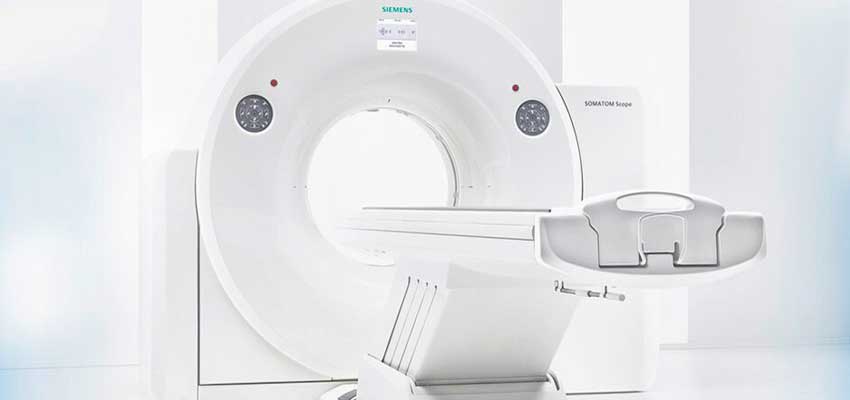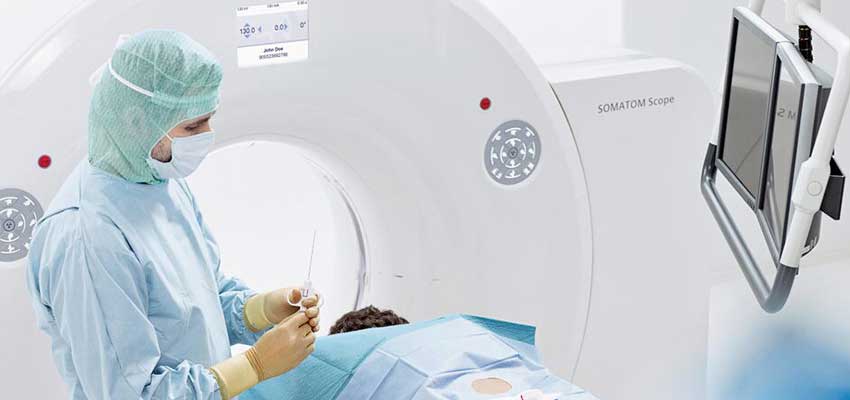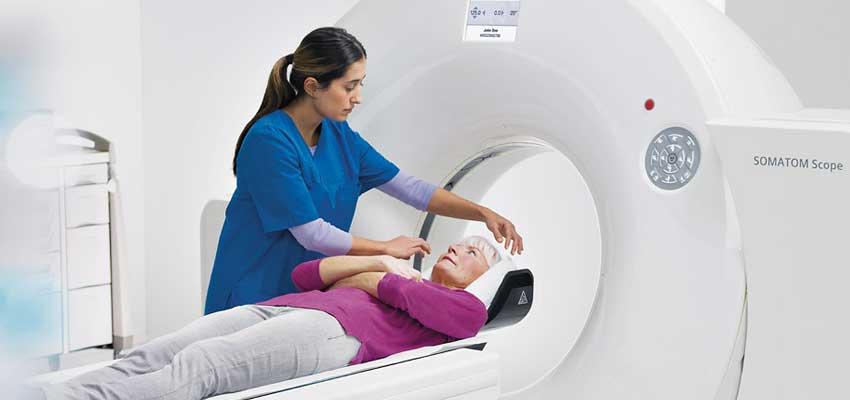SOMATOM SCOPE 32 SLICE CT
We offer state-of-the-art patient services in computed tomography (CT) and serve as a leading source across the city.
What is a CT scan?
A computed tomography (CT) scan is an imaging test that uses a computer to put a series of x-ray images together to create detailed 3D images of organs, tissues, bones and blood vessels in the body. Some CT scans require a contrast medium to show organs and structures more clearly.
A CT scan is also called computerized axial tomography (CAT) scan.
Why a CT scan is done
A CT scan can help detect a wide range of abnormalities or disease, including cancer, in any part of the body. A CT scan may be done to:
- Study the brain, spine, chest, abdomen or pelvis
- Find out the size, shape and location of tumours
- Determine how far cancer has spread and if it is in nearby organs and tissues (staging)
- Guide the doctor during a needle aspiration, biopsy or some types of cancer treatment
- Find out if cancer treatment is working by comparing the size of the tumour before, during and after treatment
- Check if cancer has come back (recurred) after treatment
How a CT scan is done
CT scans are usually done as an outpatient procedure in the Centre. The test usually takes 10 to 30 minutes, but it may take longer if necessary.
Depending on the organ or structures being studied, you may be asked to:
- Not eat or drink anything for a certain number of hours before the test
- Take a laxative
- Have an enema
- remove all metal objects including jewellery, glasses or braces (if you can) Depending on the part of the body being scanned, a contrast medium may be given:
- By mouth (orally)
- By needle into a vein (intravenously)
- Through the rectum (called an enema)
- Before you have a CT scan, it is important to tell the x-ray technologist or radiologist if you are pregnant or think you may be pregnant.
- If a contrast medium will be used, it is important that you tell the x-ray technologist or radiologist if you are breastfeeding or if you have any allergies or sensitivities to iodine, seafood or contrast dyes.
- You will be asked to lie on a narrow table. Straps and pillows may be used to help you stay in the correct position and hold still during the exam. The table slides into the CT scanner. The CT scanner looks like a large rectangular unit with a hole in its centre, like a giant doughnut or lifesaver. You may hear clicking or whirring noises during the scan. The camera moves around in the scanner, taking many images (slices). Computer software then stacks these image slices together to make a 3D image of the body.
Side effects
CT scans use low levels of ionizing radiation. But the risk associated with any one scan is small. CT scans and other x-rays are strictly monitored and controlled to make sure they use the least possible amount of radiation. The benefits of having a CT scan outweigh the risk of exposure to the small amount of radiation received during the scan.
On rare occasions, the contrast medium may cause an allergic reaction.
What the results mean
The radiologist examines the pictures and prepares a report for your doctor. Your doctor will talk to you about the results and decide whether further tests, procedures, follow-up care or additional treatments are needed.
Special considerations for children
Preparing children before a test or procedure can help lower their anxiety, increase their cooperation and develop their coping skills.
This includes explaining to children what will happen during the test, such as what they will see, feel and hear.
Preparing a child for a CT scan depends on the age and experience of the child. However, Sedation might be required if the child doesn’t cooperate.



